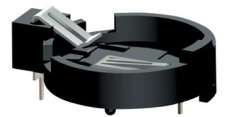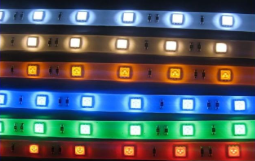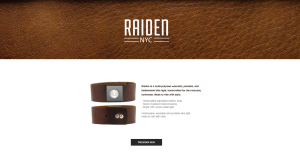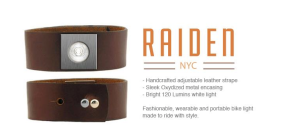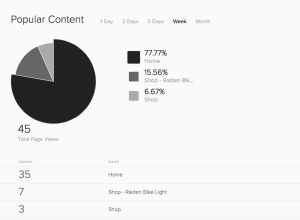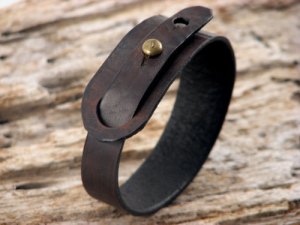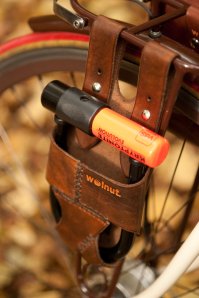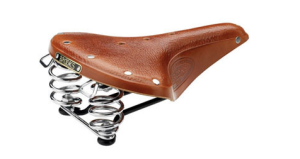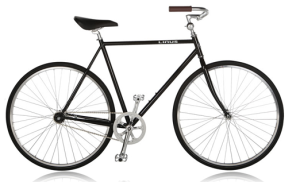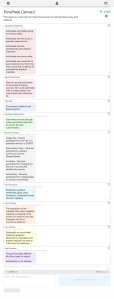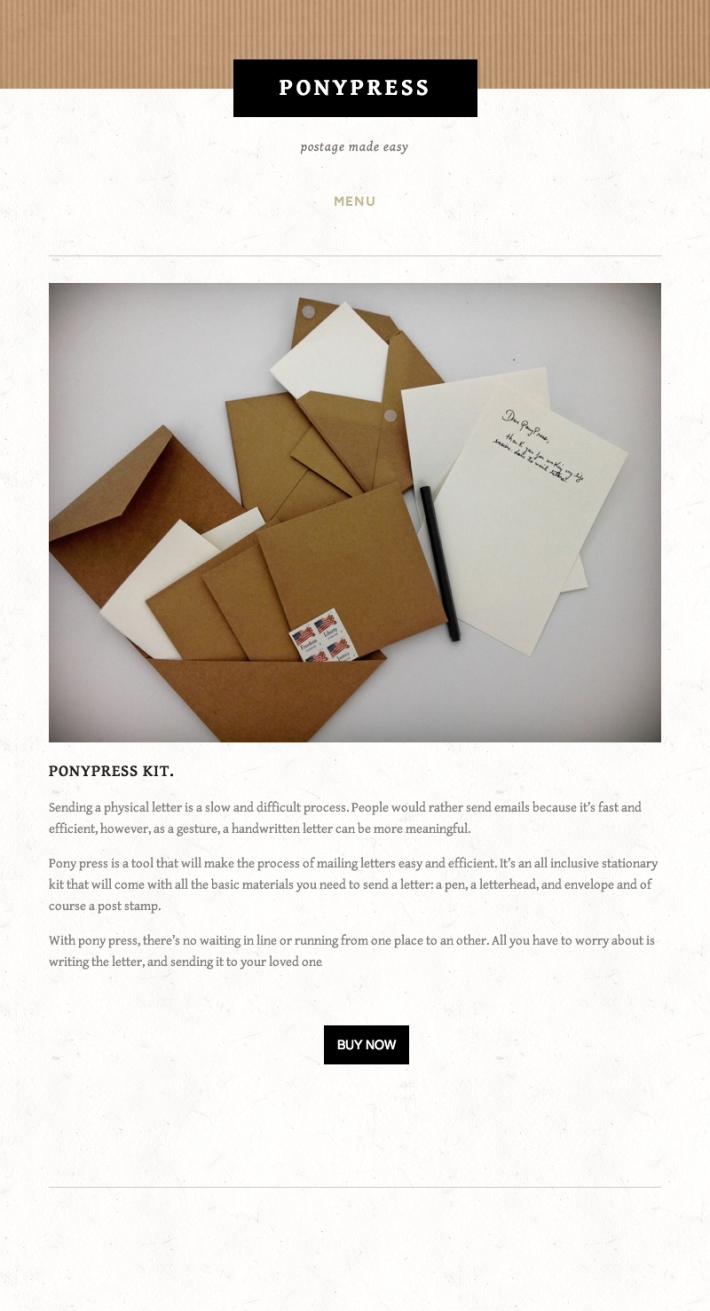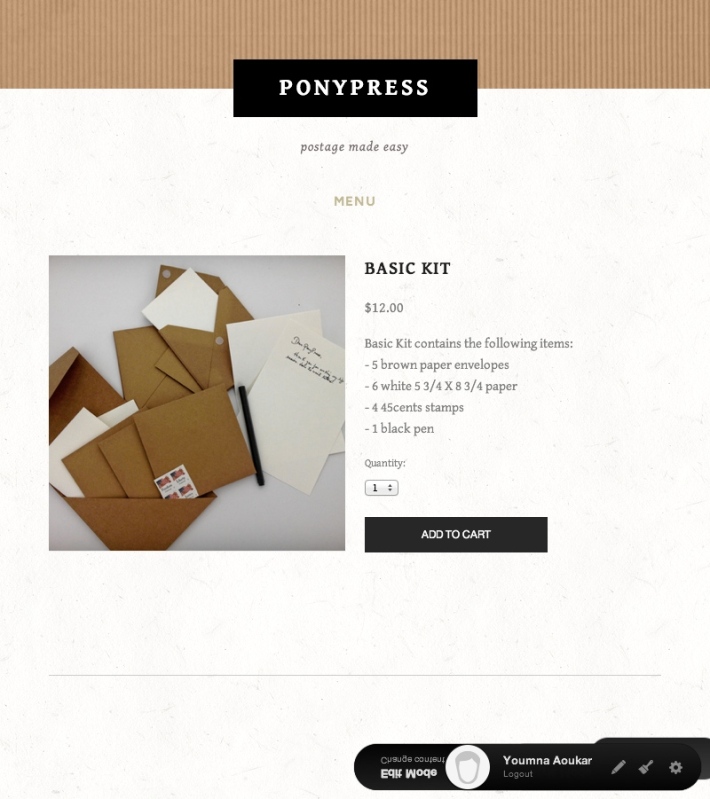As Joe mentioned earlier, I will be responsible of Customer relationships and E-commerce.
My first exercise for this week was to to reformulate our concept and articulate it as a mini-pitch
Concept/Pitch
Sending a physical letter is a slow and difficult process. People would rather send emails because it’s fast and efficient, however, as a gesture, a handwritten letter can be more meaningful.
Pony press is a tool that will make the process of mailing letters easy and efficient. It’s an all inclusive stationary kit that will come with all the basic materials you need to send a letter: a pen, a letterhead, and envelope and of course a post stamp.
With pony press, there’s no waiting in line or running from one place to an other. All you have to worry about is writing the letter, and sending it to your loved ones.
E-commerce research
Since we are going to be dealing with sales, delivery and customer relationships we will need to set up an e-commerce website for these transactions.
We have been researching about the easiest and quickest way to prototype an e-commerce platform and we have found a couple of services that can help us achieve this by using customizable CMS ‘ s
Here are a couple of options:
http://www.shopify.com
http://volusion.com
http://www.3dcart.com
http://www.prestashop.com
http://www.magentocommerce.com
These services provide us with the tools to create an online business without worrying of hiring a developer or designer. It is the best solution to create a quick prototype for our product and test it around the world.
What is great about these services is that if you know the basics of visual design and front-end development, you will be able to manipulate the template by choosing from different designs and customizing the HTML and CSS.
With these services, we don’t have to worry about the back end because they provides you will a powerful database where you can keep track of the profile of your customers: their emails, physical adresses and of course purchase history.
What is great about these services is that we could keep track of sales trends and look into the sites analytics to see the day to day activity of the website.
With these services a customer can purchase with any credit card and PayPal.
We also found out that the service squarespace enables users to set up a shop and use e-commerce facilities.
http://www.squarespace.com
Since we already used the platform and are familiar with the interface, it can be one of our best options.
All these services provide us with 15 days trials and have a variety of prices.
We are leaning towards using shopify or squarespace. We are going to use the trials to test out the interface and play with the code and designs.
Shopify is more expensive then squarespace. The basic package costs 29$/mo. For Squarespace the basic package is 8$/mo and the business package is 24$/mo
In the next few weeks we will be choosing which one is worth it.
Our next step is to set up a domain name. We have been thinking and brainstorming about several names and checking if they are available online.
So the possible names are the following:
press.it
ponypress.com
ponypr.es
paperpr.es
ponyletters.com
ponypost.it
ponynote.com
e-lope
printmatters
retrostamp
retromail
thebrightside
moondance
smokesignalpress
sincerely.com
withregards.com
retropost
And the domains that are available are the following:
ponyletters.com
ponypostit.com
ponynote.com
boxofnotes.com
ticktockpress.com
skippingbear.com
printedmessage.com
giddoupress.com
retrostamp.com
brightside.com
moondancepress.com
backtopress.com
For next week’s deliverable, I will be working on setting up the website and designing basic wireframes for the landing page of our site.
Surveys
I conducted a couple of surveys with friends to validate our idea
-Oskar Von Hauske, 27 years old
-Do you like mailing letters?
No
-Do you like receiving letters from family/friends/anyone on the mail? If so, do you enjoy them more than emails/digital cards?
Yes
-When was the last time you mail a letter? How did you find the process of mailing? (Boring, exhausting, slow, time consuming?)
Time consuming, and painful
-How many times a year would say that you mail letters?
None, usually just checks
-Where do you buy your stamps?
Local bodega or post office
-Where do you usually like to buy your stationery supplies?
Letterpress shops or card shops
-If you had access to a service that could allow you to mail a letter as easy as sending an email, would you be interested in it and/or pay for it?
Yes definitely
-Tom Lawrie, 30 years old
-Do you like mailing letters?
No
-Do you like receiving letters from family/friends/anyone on the mail? If so, do you enjoy them more than emails/digital cards?
I like receiving cards, prefer/enjoy emails more
-When was the last time you mailed a letter? How did you find the process of mailing? (Boring, exhausting, slow, time consuming?)
I have to mail my rent and national grid bills at the end of every month. I find the process to be wasteful both with time and money, would prefer to pay online.
-How many times a year would say that you mail letters? about 20-30, which includes birthday cards, christmas cards, mother’s day/father’s day etc..
-Where do you buy your stamps?
Interesting question, used to buy them at my bank’s atm but they discontinued it, so now i have to go to the post office, so annoying 
-Where do you usually like to buy your stationery supplies?
Staples or the $0.99 store, whatever is the closest to school or home
-If you had access to a service that could allow you to mail a letter as easy as sending an email, would you be interested in it and/or pay for it?
Yes, just tell me where to sign, have you heard of Outbox? interesting company – http://techcrunch.com/2013/02/25/outbox-digitizes-sf-snail-mail/

